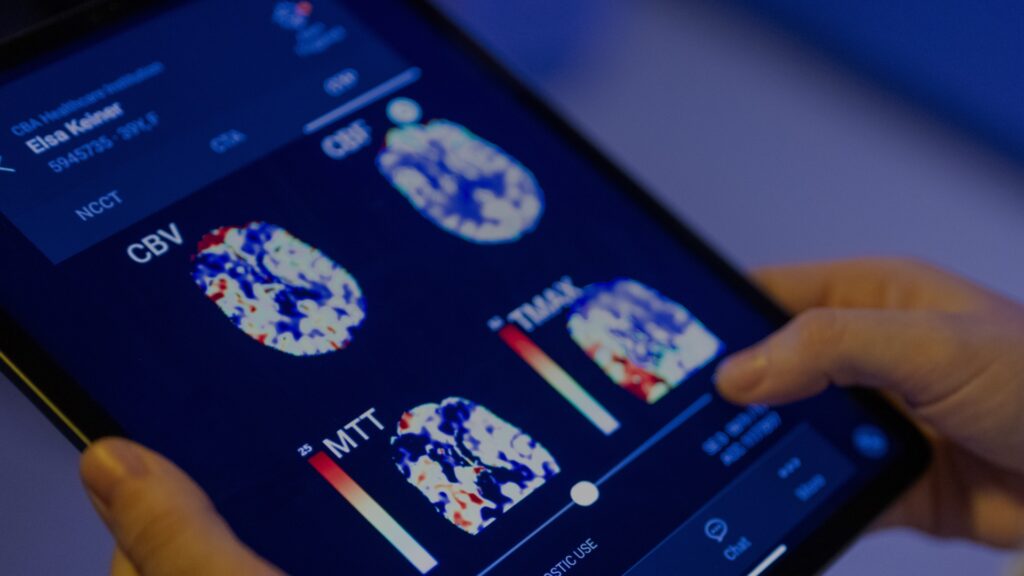Technological advancement in MedTech is enabling faster and more accurate diagnoses and treatments for patients around the world. From wearables to AI-powered innovation, medical technology has opened the door to more personalized and real-time care.
Our society’s aging global population, coupled with the rise in chronic diseases among younger populations, is putting significant pressure on healthcare systems. The need for new solutions is fueling innovation and digitalization across the industry. New advances in data analytics through artificial intelligence and machine learning are changing the future of the MedTech industry—a market segment predicted to reach $996.93 billion by 2030.
So, what is happening behind the scenes and how are modern healthcare products getting smarter and more efficient? A key aspect of this evolution is the involvement of wearable sensors, edge computing, and wireless devices to create seamless connection points useful for the entire medical ecosystem of doctors, nurses, engineers, designers, sourcing professionals, patients, families, and others.
Wearables and Personalized Treatment
Creating and launching a new medical device is no easy feat, and overcoming stress testing of individual components and filing for regulatory approval are just two of the hurdles. But many companies are overcoming these hurdles and bringing user-friendly medical devices that empower people to better understand and regulate what’s happening in their bodies to market. These devices use key technologies, including IoT functions, sensors, and wearables, to help patients monitor their vital signs, such as percentage of blood oxygenation, heart rate, blood pressure, and more.
It is estimated that one in three adults will own a wearable device by 2025.
It is estimated that one in three adults will own a wearable device by 2025. Real-time knowledge is insightful and a powerful impetus for making lifestyle changes and maintaining good habits. This technology is also creating a new model of care where much more is being done at home. Behind all of this are wireless solutions, sensors, and semiconductor products that are driving the collection, connection, and sharing of data and insights.
As MedTech continues to evolve, treatments will become more personalized. Physicians will more regularly review data remotely and offer recommendations for treatments and even helpful home products. For example, an adjustable bed is now on the market that can sense when someone is snoring, and the bed automatically changes its incline to try and help reposition the person to open their airways. This may be a key solution for those who struggle with sleep apnea.
Edge Processing
Making personal health data and insights immediately accessible to patients is a result of edge processing, which in many cases includes AI and machine learning models. Semiconductor manufacturers are highly focused on this right now, as it allows insights to occur closer to the patient and requires less bandwidth and data to be exchanged with the cloud.
Edge computing brings data processing, analysis, and storage closer to the source, such as a patient’s cell phone, watch or iPad. It works as a complement to the cloud. This strategy can help both patients and health systems optimize the collection, storage, and analysis of data—which requires consideration of privacy, storage space, and costs. But, the desire for immediate access to information is the real motivator.
Semiconductor suppliers such as NXP, STMicroelectronics, and Microchip are providing the path for real-time diagnosis and personalized treatment. For instance, NXP has a long history of providing rigorously tested products to verticals, including the healthcare industry. Their products integrate functions, including how to process information at the far edge, along with security, computing, and connectivity measures. They are one of the leaders behind products in edge processing and bringing real-time data to people’s fingertips.

From a power standpoint, a supplier offering drop-in solutions with medical certifications such as RECOM Power can save design time, energy and cost. Medical grade AC/DC power supplies and DC/DC converters that are fully tested through rigorous agency certifications and made for the rigor of a medical setting can expedite medical technology development time. Buying appropriately suited medical power solutions will become increasingly advantageous as applications get smaller and require safe voltage levels for providers and patients.
For patients, the easier it is to access their personal health data, the better. Someone who wants to actively monitor how long or deep they are sleeping each night can collect those data points continuously and have them pushed to their preferred device through edge computing. Today’s technology allows patients to review data and understand some of the things happening in their bodies on a daily basis.
Wireless Modules and Devices
The acceptance and popularity of wireless devices grew exponentially when the COVID-19 pandemic necessitated remote access and, in turn, spotlighted many other benefits, including more efficient healthcare delivery and continuous patient monitoring. Heart monitors and continuous blood glucose level monitors are examples of healthcare devices that have gained widespread acceptance in improving patient outcomes and remote patient management.
This all feeds into the Internet of Medical Things (IoMT), where networks of patients with portable and/or wearable medical devices and sensors and their corresponding healthcare systems and providers are connected through the Internet. IoMT devices help automate data transfer, thereby reducing human errors.
The wireless concept here is important because it allows for near-field and/or short-range communication.
The wireless concept here is important because it allows for near-field and/or short-range communication. Wireless modules also allow a broader aggregation of data in the cloud, which enables practitioners to remotely monitor patients and access a wider sample for benchmarking and diagnosing.
Using anomaly detection, certain events or triggers throughout a patient’s day can select periods where more verbose diagnostic data can be helpful, and provide extra data for those events. Having all this data available in the cloud to a patient’s full bench of providers supports more complete and accurate patient management.
Opening Access to Patient Care
Medical technology is not only personalizing healthcare, it is also increasing access to health care. By lowering burdens on patients and physicians, more people will be able to enter and use the healthcare system. The AI and data revolution is reimagining the future of care, surgery, therapy, medication usage, and more. It will be exciting to see where we’re at 10 years from now.
While the MedTech industry continues to face significant challenges related to regulatory requirements, cybersecurity issues, recalls and lawsuits, leaders in the industry are navigating and overcoming these areas to push innovation forward like never before.
The impact of IoT will continue to grow as more medical sensors are developed and drive more secure connections to deliver sensitive health data. As device usage keeps increasing among the general population, there will be more data to store and make sense of, which will spur additional AI models doing the detection work that doctors and specialists are currently charged with today. Using devices for continuous monitoring is already showing the deep and remarkable impact personalized healthcare can make.







